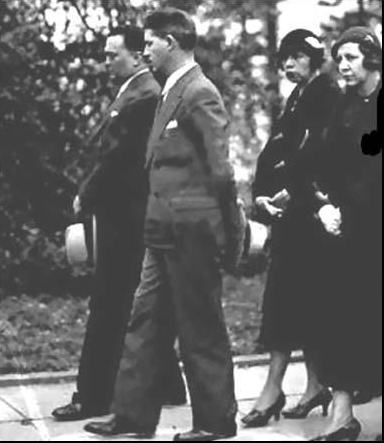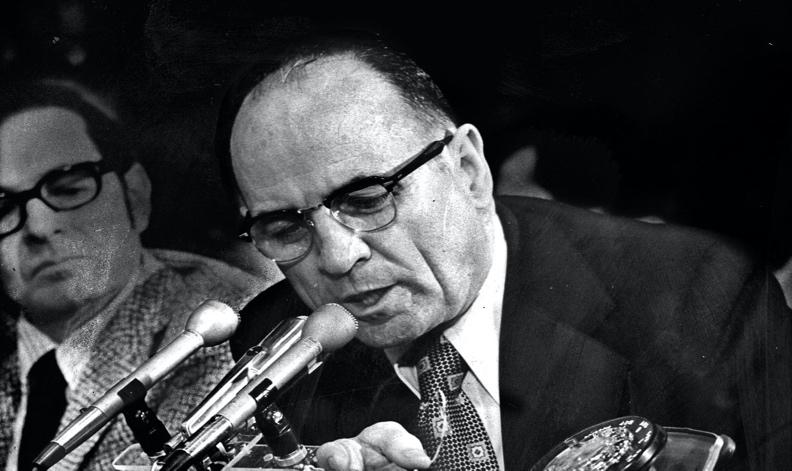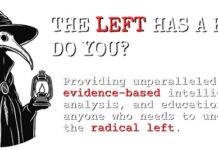
By studying the CIA’s history, we can see how they cover up the identity of their agents.
Officially, George H.W. Bush’s association with the Central Intelligence Agency (CIA) began with his appointment to the post of Director of Central Intelligence by then President and former Warren Commission member Gerald Ford. However, speculation persists that Bush’s relationship with the Agency began long before his tenure as DCI.
How a politician with no known background in intelligence was able to ascend to the top post of a famously insular and opaque organization remains unclear. According to the CIA’s internal history, Bush was selected as an outsider to improve both morale and the Agency’s relationship with Congress.
However, evidence exists which points to a connection between George Bush and the CIA long before his assent to the Agency’s top post.
After the assassination of President Kennedy in November 1963, FBI Director J. Edgar Hoover reported in a memo to the State Department that he had verbally briefed a man named George Bush of the CIA on the reaction to President Kennedy’s death in the Cuban exile community.
During this time in Bush’s career, he was in charge of Zapata Offshore Company in Houston, Texas. When The Nation first published evidence of Bush’s involvement with the Agency in 1988, reporter Joseph McBride alleged that Bush’s position at the oil company was a cover for clandestine operations. McBride cited a November 29, 1963 memo from J. Edgar Hoover saying Bush “started working for the Agency in 1960 or 1961, using his oil business as a cover for clandestine activities.”

Shortly after the memo surfaced, CIA spokesperson Sharon Basso denied the accuracy of the reporting, despite stating that the Agency “usually does not confirm nor deny employment or association with the C.I.A.”
It was not George H.W. Bush referenced in the memo, Basso stated, but rather another person named George Bush—in this case, a former employee named George William Bush who left the agency in 1964.
The existence of another person named George Bush employed by the same agency of government than the more well-known George Bush would later run strains credulity, but does not fall outside the realm of possibility. However, given the Agency’s track record in this area, there is significant reason to doubt such an explanation.
Lee Pennington was an FBI informant and right-wing operative who maintained a close working relationship with Watergate burglar James McCord. According to Jefferson Morley in Scorpions’ Dance, McCord regularly relied on Pennington for intelligence during the former’s career at the CIA.

Pennington and McCord’s relationship was well documented. Pennington visited McCord’s Rockville, Maryland, home both on June 17, 1972, the night McCord was arrested breaking into the Democratic National Committee’s headquarters at the Watergate complex in Washington, D.C., and on the night of a mysterious fire at the McCord residence, whose origin remains unknown.

What is known, however, is that many documents were destroyed at McCord’s residence on the night of June 22, 1972. McCord conceded that files were destroyed and offered an explanation for this—Ruth McCord received a bomb threat on June 19th and McCord, from jail, instructed his wife to get rid of all paper that could be a potential fire hazard.
Morley advances the argument that Pennington destroyed evidence which connected the Agency to the Watergate break-in. At the time, McCord was operating a private security firm, McCord Associates, which was believed to be a CIA front.

Both Nixon and the CIA sought to slow the investigation into the Watergate break-in as the FBI and Watergate investigators began looking into the fire at McCord’s residence and Pennington’s role in the destruction of evidence. The CIA, being more adept at misdirection and obfuscation, had the answer.
In response to the FBI’s request to provide information on a person called “Mr. Pennington,” the CIA responded with the name Cecil Harold Pennington. This Pennington was not related to the Pennington present at McCord’s house on the night of the fire and never supervised McCord while at the Agency. It took investigators more than a year to discover the true identity of Lee Pennington.
The so-called “Pennington Ruse,” as Morley puts it, demonstrates one way the Agency has chosen to respond to the revelation of a CIA asset’s identity. It represents a pattern in the way the Agency perpetuates modified limited hangouts, when blatant cover-ups are not an option.
Ideally, agencies of government would be honest and open. We should be able to rely on them to report the truth and take responsibility for any wrongdoing. However, the CIA’s long history of deception and omission forces observers to study patterns in order to learn America’s true para-political history.

CovertAction Magazine is made possible by subscriptions, orders and donations from readers like you.
Blow the Whistle on U.S. Imperialism
Click the whistle and donate
When you donate to CovertAction Magazine, you are supporting investigative journalism. Your contributions go directly to supporting the development, production, editing, and dissemination of the Magazine.
CovertAction Magazine does not receive corporate or government sponsorship. Yet, we hold a steadfast commitment to providing compensation for writers, editorial and technical support. Your support helps facilitate this compensation as well as increase the caliber of this work.
Please make a donation by clicking on the donate logo above and enter the amount and your credit or debit card information.
CovertAction Institute, Inc. (CAI) is a 501(c)(3) non-profit organization and your gift is tax-deductible for federal income purposes. CAI’s tax-exempt ID number is 87-2461683.
We sincerely thank you for your support.
Disclaimer: The contents of this article are the sole responsibility of the author(s). CovertAction Institute, Inc. (CAI), including its Board of Directors (BD), Editorial Board (EB), Advisory Board (AB), staff, volunteers and its projects (including CovertAction Magazine) are not responsible for any inaccurate or incorrect statement in this article. This article also does not necessarily represent the views the BD, the EB, the AB, staff, volunteers, or any members of its projects.
Differing viewpoints: CAM publishes articles with differing viewpoints in an effort to nurture vibrant debate and thoughtful critical analysis. Feel free to comment on the articles in the comment section and/or send your letters to the Editors, which we will publish in the Letters column.
Copyrighted Material: This web site may contain copyrighted material the use of which has not always been specifically authorized by the copyright owner. As a not-for-profit charitable organization incorporated in the State of New York, we are making such material available in an effort to advance the understanding of humanity’s problems and hopefully to help find solutions for those problems. We believe this constitutes a ‘fair use’ of any such copyrighted material as provided for in section 107 of the US Copyright Law. You can read more about ‘fair use’ and US Copyright Law at the Legal Information Institute of Cornell Law School.
Republishing: CovertAction Magazine (CAM) grants permission to cross-post CAM articles on not-for-profit community internet sites as long as the source is acknowledged together with a hyperlink to the original CovertAction Magazine article. Also, kindly let us know at info@CovertActionMagazine.com. For publication of CAM articles in print or other forms including commercial internet sites, contact: info@CovertActionMagazine.com.
By using this site, you agree to these terms above.
About the Author

Jack Rockwood is an independent researcher based in California with an interest in Watergate, the Kennedy Assassination, and the connection between those two deep events.
Jack can be reached at j.rockwood56@gmail.com.











[…] https://covertactionmagazine.com/2022/09/08/george-h-w-bush-the-cia-and-the-pennington-ruse/ […]